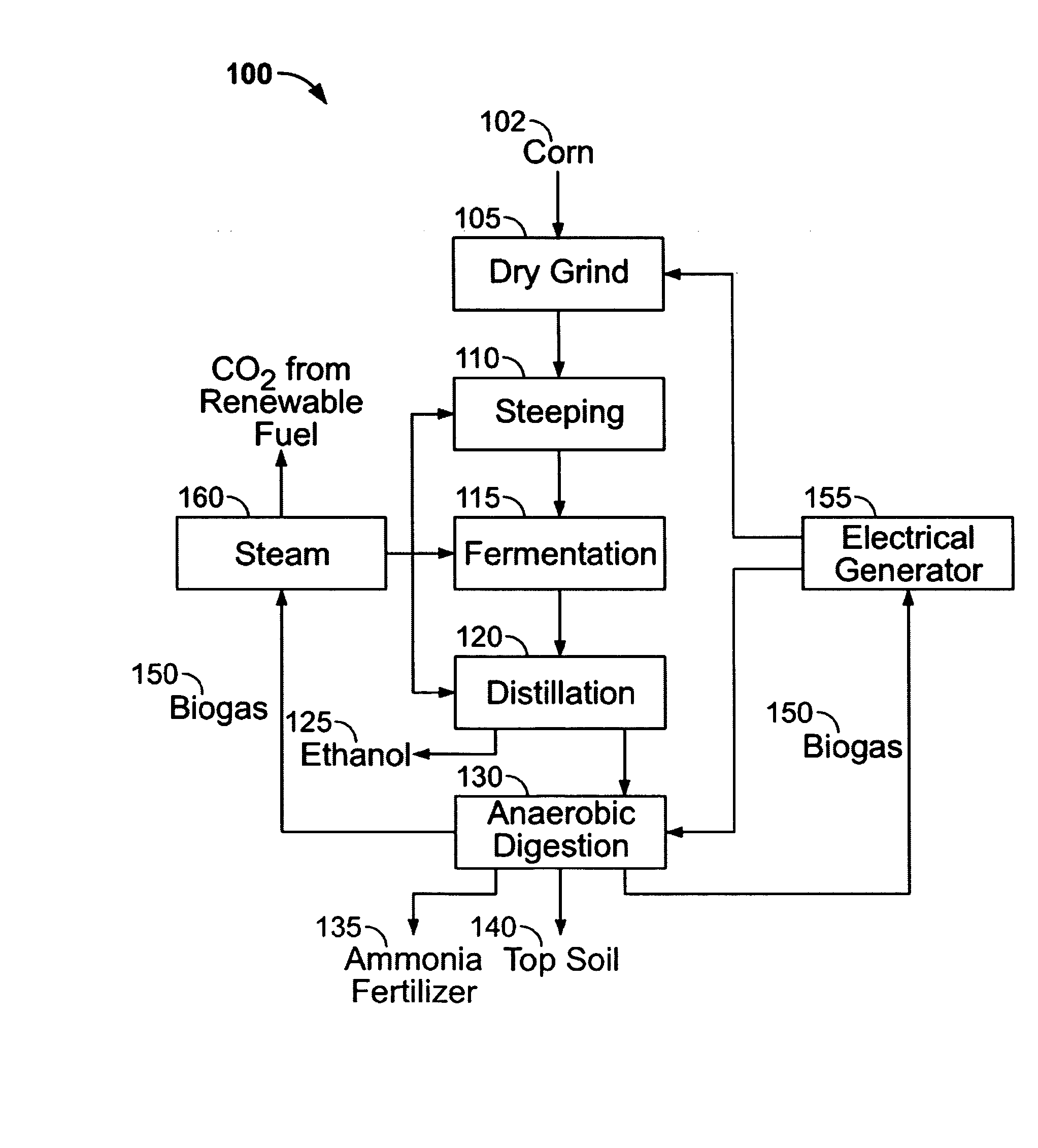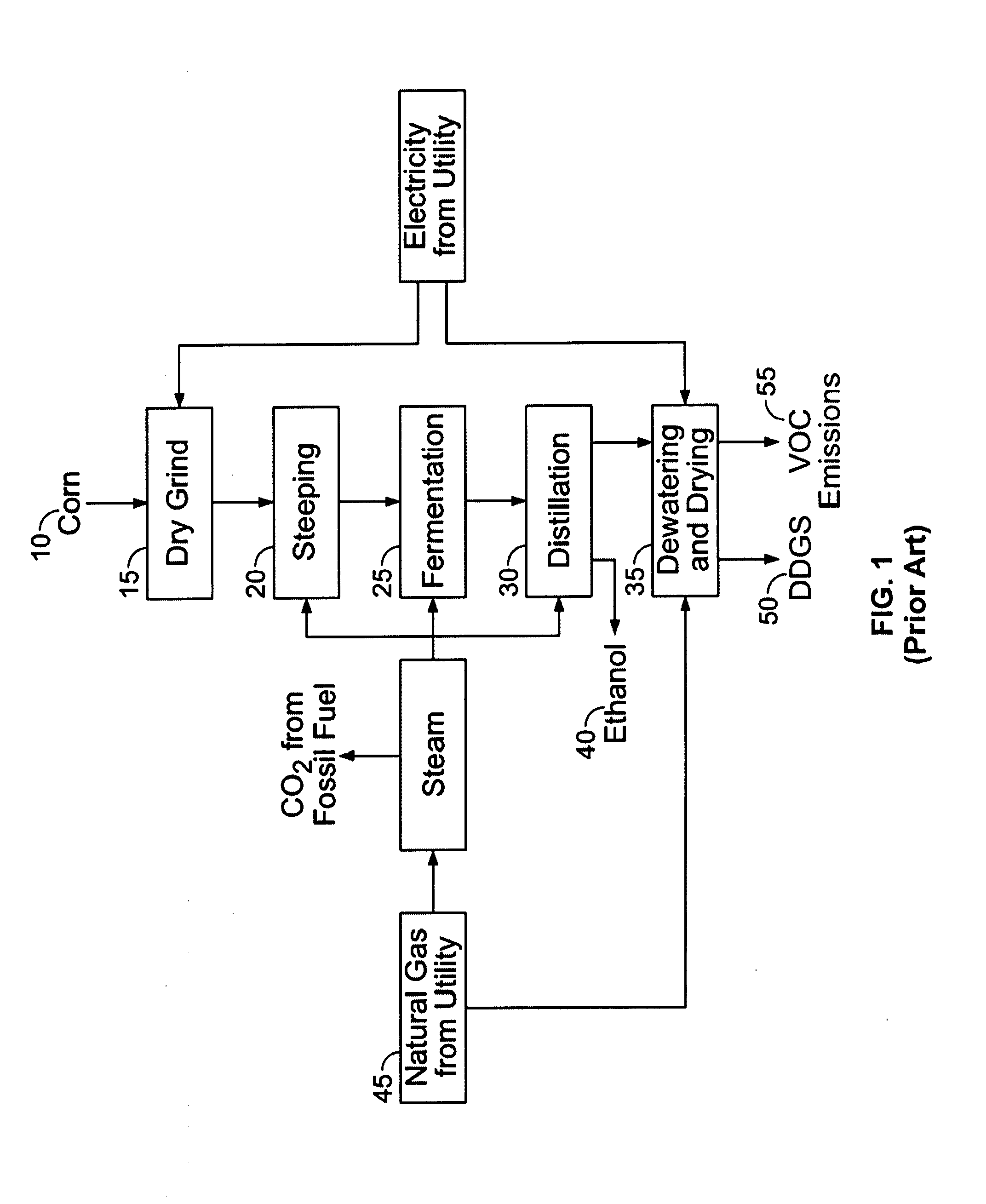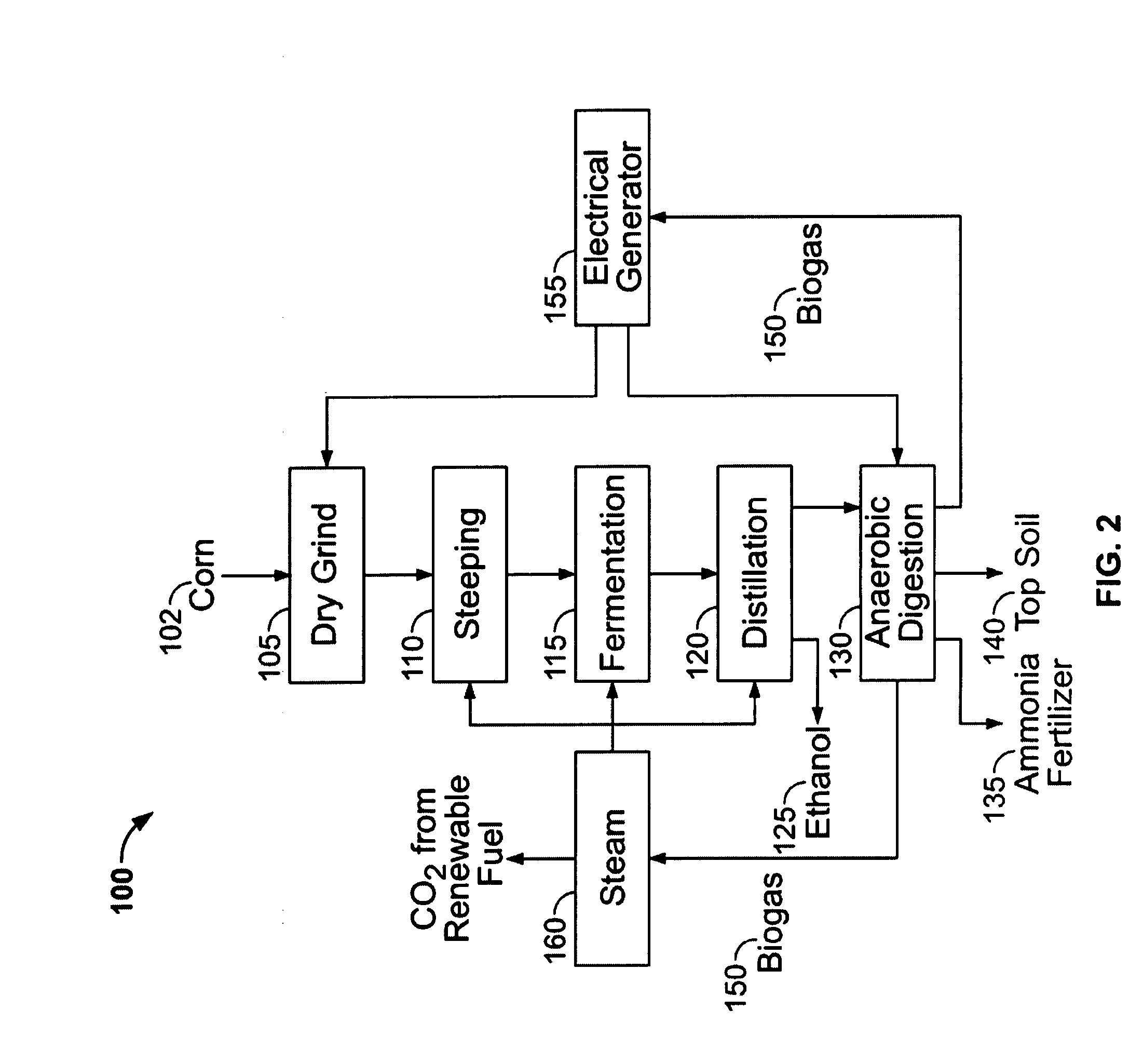Process for producing ethanol and for energy recovery
a technology of energy recovery and ethanol, applied in the field of ethanol production, can solve the problems of disadvantageous ddgs producing volatile organic compounds, and achieve the effects of reducing electrical requirements, reducing greenhouse gas emissions, and reducing voc emissions from ethanol facilities
- Summary
- Abstract
- Description
- Claims
- Application Information
AI Technical Summary
Benefits of technology
Problems solved by technology
Method used
Image
Examples
Embodiment Construction
[0028] Referring now to FIG. 2, there is shown and disclosed one embodiment of the present invention, which illustrates a process for the production of ethanol. In this first system 100, corn 102 is grounded 105 into a dry grind. The dry grind then undergoes a steepping process 110 where water and enzymes are added to produce a mash. The mash is then fermented with yeast, 115. The fermentation is then distilled 120, to extract ethanol 125. The spent mash or remainder goes into an anaerobic digester 130 which extracts ammonia fertilizer 135, top soil 140 and biogas 150. The biogas 150 is used to help power an electrical generator 155 and a steam generator 160 which is used in the system 100. The ammonia fertilizer 135 and top soil 140 may be sold and / or consumed on premise. In this first system, the DDGS or WDGS is not consumed by animals, rather the whole stillage is feed into the anaerobic digester 130 to extract the full amount of energy in the whole stillage.
[0029] The developme...
PUM
| Property | Measurement | Unit |
|---|---|---|
| radius | aaaaa | aaaaa |
| retention time | aaaaa | aaaaa |
| energy | aaaaa | aaaaa |
Abstract
Description
Claims
Application Information
 Login to View More
Login to View More - R&D
- Intellectual Property
- Life Sciences
- Materials
- Tech Scout
- Unparalleled Data Quality
- Higher Quality Content
- 60% Fewer Hallucinations
Browse by: Latest US Patents, China's latest patents, Technical Efficacy Thesaurus, Application Domain, Technology Topic, Popular Technical Reports.
© 2025 PatSnap. All rights reserved.Legal|Privacy policy|Modern Slavery Act Transparency Statement|Sitemap|About US| Contact US: help@patsnap.com



